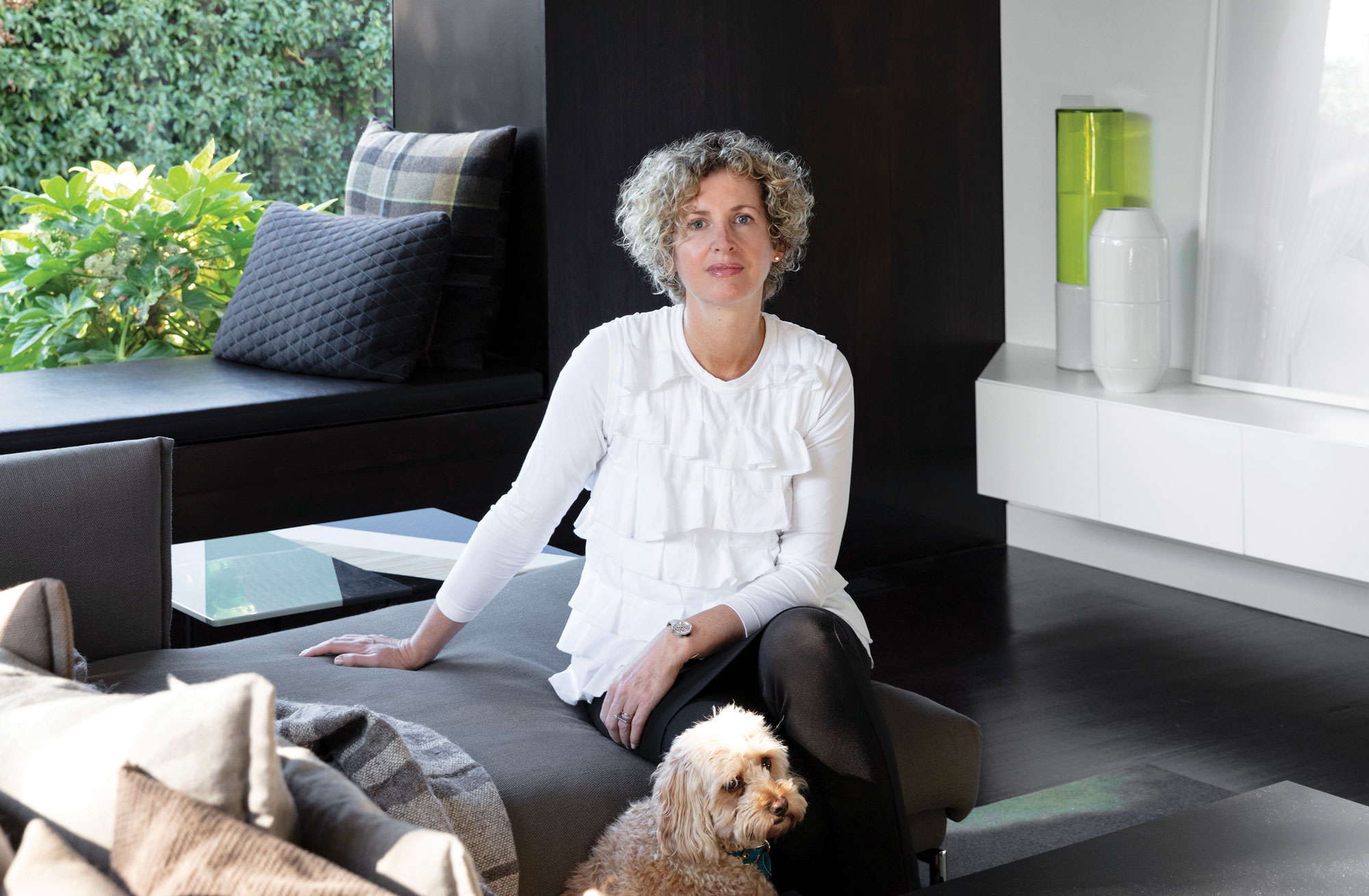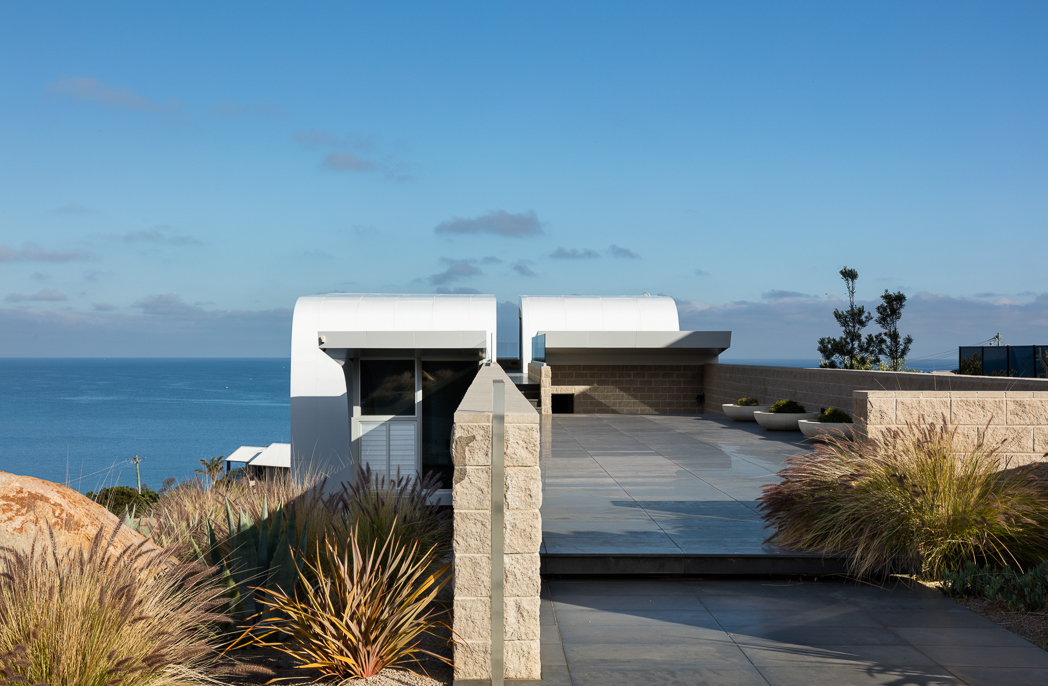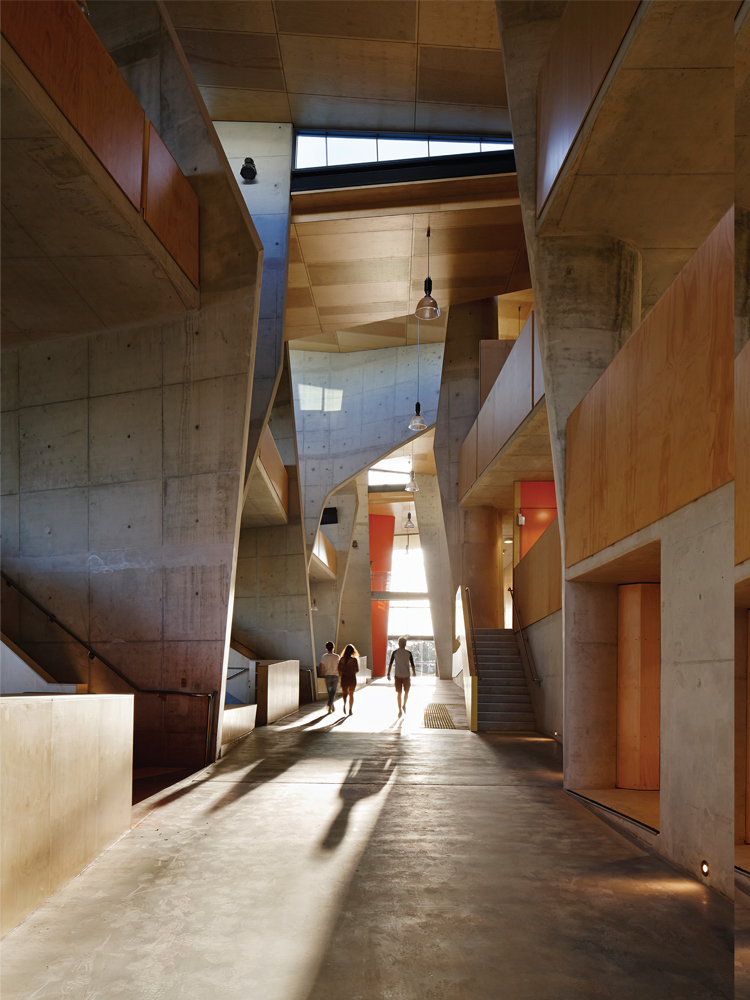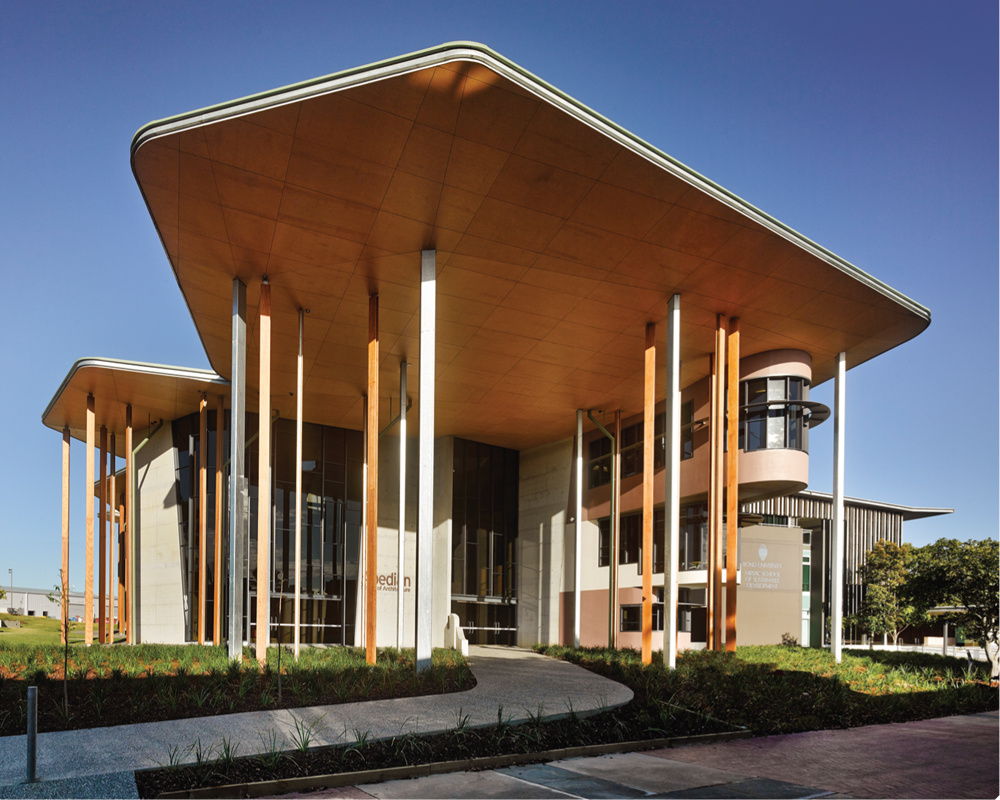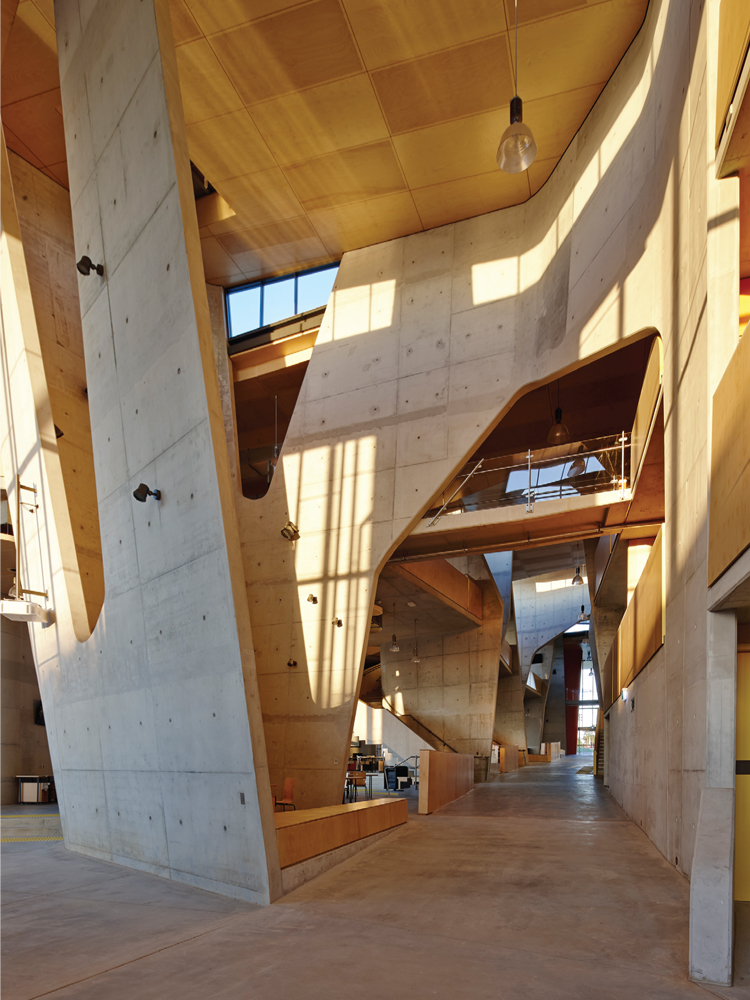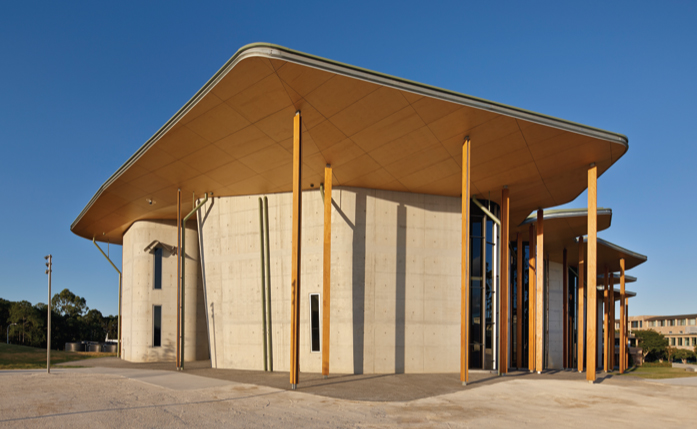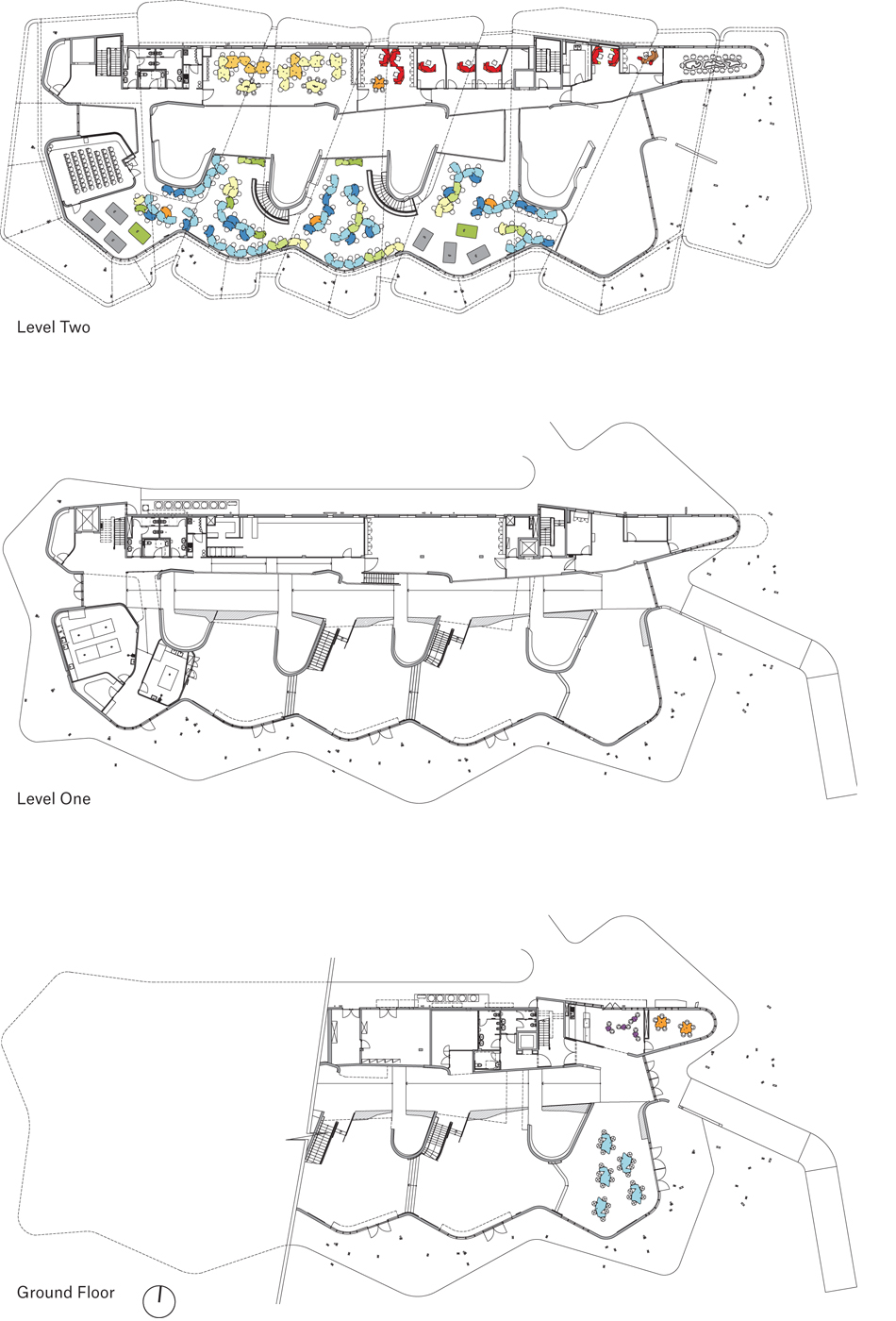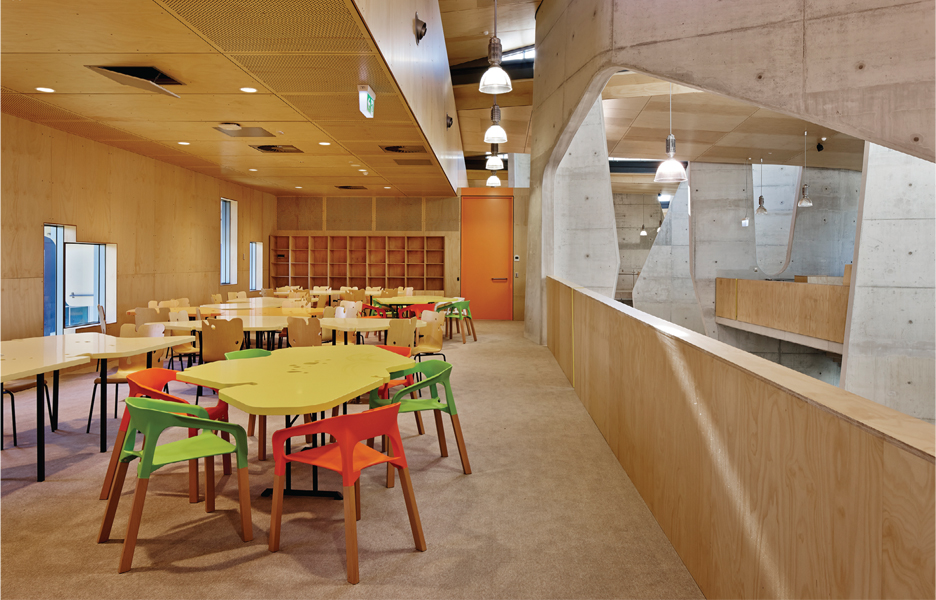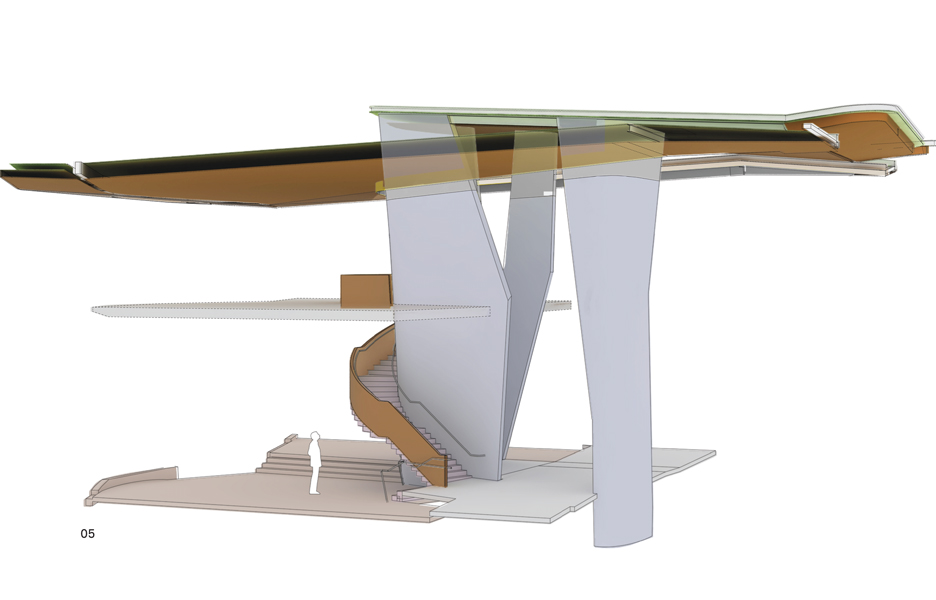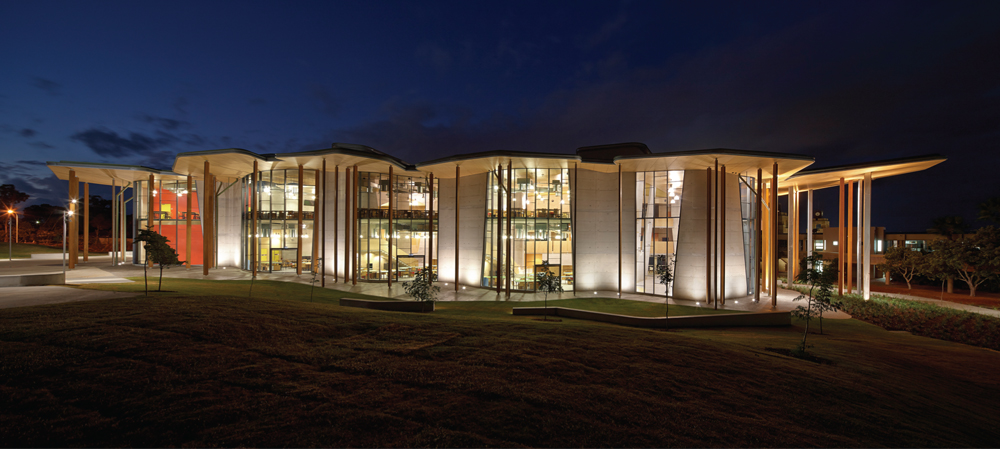
Soheil Abedian School of Architecture
Soheil Abedian School of Architecture
Share
Renowned architectural designer and theorist, Sir Peter Cook (Cook Robotham Architectural Bureau) designed the Abedian School of Architecture. The project was featured in AR134–Authority.
Location: Gold Coast, Australia
Architect: Cook Robotham Architectural Bureau (CRAB) studio
Review: Sandra Kaji-O’Grady
Photography: Peter Bennetts
The superstores, warehouses and fringe suburbia that edge the congested San Diego Freeway between Los Angeles and La Jolla, home to the Salk Institute, are indistinguishable from those lining the Pacific Motorway between Brisbane and Robina on the Gold Coast, the site of CRAB’s new building on the Bond University campus. At the Salk Institute, Louis Kahn’s symmetrical scheme declares the possibility of perfection and connection with nature in stark contradiction to the automobile-generated dystopia that guarantees its operation and to which it turns its back.
The entire Gold Coast is caught up in similar contradictions. The massive infrastructure that makes it possible to live along its canals destroys the natural environment that originally attracted residents. With its artificial lake, ceremonial axis and arches, Bond University emulates the quasi-Classicism of American Ivy League campuses, yet in reality the campus is overwhelmed by car parking for the nearest train station is four kilometres away.
The benefactor of the School of Architecture and of its new building, Soheil Abedian, is the executive chairman of the Sunland Group – the local developers responsible for the gauche Palazzo Versace, designed by Rocco Magnoli (2000), as well as, more recently, Yve Apartments by Wood Marsh.
Trained as an architect in Austria, Abedian has a shrewd understanding of architecture’s ‘branding’ power in the development market. Bond University awarded Abedian an honorary doctorate in 2011 – he joins media mogul Kerry Packer, tennis star John Newcombe and conservative politician John Howard as a recipient of Bond’s highest recognition.
Under these inauspicious conditions, London-based architectural studio of Cook Robotham Architectural Bureau (CRAB) has attempted to awaken students to an avant-garde sensibility outside their day-to-day experience. Sadly, the new building does not recall the irreverent and playful forms and devices of Archigram, the influential English group of the 1960s of which Sir Peter Cook was a member. The exterior has none of the giddy verve of Walking City (1964) or Seaside Bubbles (1966) or, even, the realised Kunsthaus Graz (2003).
In their competition submission from January 2011, the exterior is shown shrouded in a dense screen of vertical timber blades that seems cynically directed at convincing the jury that the team could design in the regional idiom. In the process of ‘value engineering’ only a smattering of these blades remain, they have lost any intended structural or climatic value and interfere with the line of the projecting scalloped edge of the roof. The proposed lush gently sloping lawn with Poinciana trees has also been the victim of budget overruns and the building is ringed by concrete and gravel.
On the upside, the core ideas for the interior and for the program of architectural education remain intact. The Bond undergraduate architecture program is unusually intense, students enrol in three semesters each year and can complete their degree in just three and a half years. Its student cohort is small relative to other universities in Australia.
Accordingly, CRAB envisioned an intimate setting for ‘student experimentation, social gatherings, lectures, crits and weird happenings’, enabled by maximising the porosity between studio spaces. This has been achieved through the judicious placement of curvaceous double height concrete walls that, on their concave side, imply, but do not enclose, four spaces within. An inclined pedestrian ‘street’ divides the studio volume into a three-storey wing containing off ices for staff and future postgraduates, smaller reading and meeting rooms, kitchens and amenities. Overlooked by balconies, ramps and flights of stairs the ‘street’ has the atmosphere, acoustics and visual connections of a dense urban lane.
Referred to by the architects as ‘scoops’, the concrete walls are the major architectural gesture. Bond architecture academic, Chris Knapp, has cogently recounted in the Under Construction serial article from AR131—Present, the technical difficulties encountered in developing, documenting and constructing forms with double-curvature and little repetition.
Knapp details the creative solutions reached to achieve exacting and affordable formwork. Risk-taking and difficulty are necessary aspects of realising disciplinary innovation and the builders, ADCO, were a major part of this adventure. But now that the building is occupied the question is no longer ‘how’, but ‘why’ and ‘was it worth the trouble’?
There is no doubt that the scoops achieve ambiguity of territory, spatial differentiation and continuity, nuanced lighting effects and formal layering. Their scale and materiality suggest freeway infrastructure in a way that locates this building more accurately than could any screen of timber slats. It cannot be denied, however, that the scoops represent a major obstacle to teaching architecture.
Students are attempting to affix drawings to these concrete walls with sticky tape and blue tac, but the tight curvature of the spaces intended for crits means that drawings are invariably askew and poorly angled. The problem is so obvious, and Cook and Robotham are so richly experienced as architectural educators, it seems impossible that it can be mere oversight.
There is no suggestion that the school is moving to a paperless program, despite an evident commitment to designing through physical models and with contemporary fabrication and modeling technologies – these are housed in sheds beside the new building, which is surely a missed opportunity in integrating prototyping closely with the design studio program.
The furniture designed by CRAB and used in this building is bright and distinctive but, like the scoops, interferes with functional use. Table edges are ragged and their surfaces pitted with holes that CRAB claim emulate ‘the tradition of the “beauty spots” that were applied to the skin of the eighteenth century coquettes – in order to draw attention to the handsomeness of the rest’. Beauty spots bring to mind the Japanese idea of wabi-sabi or flawed beauty.
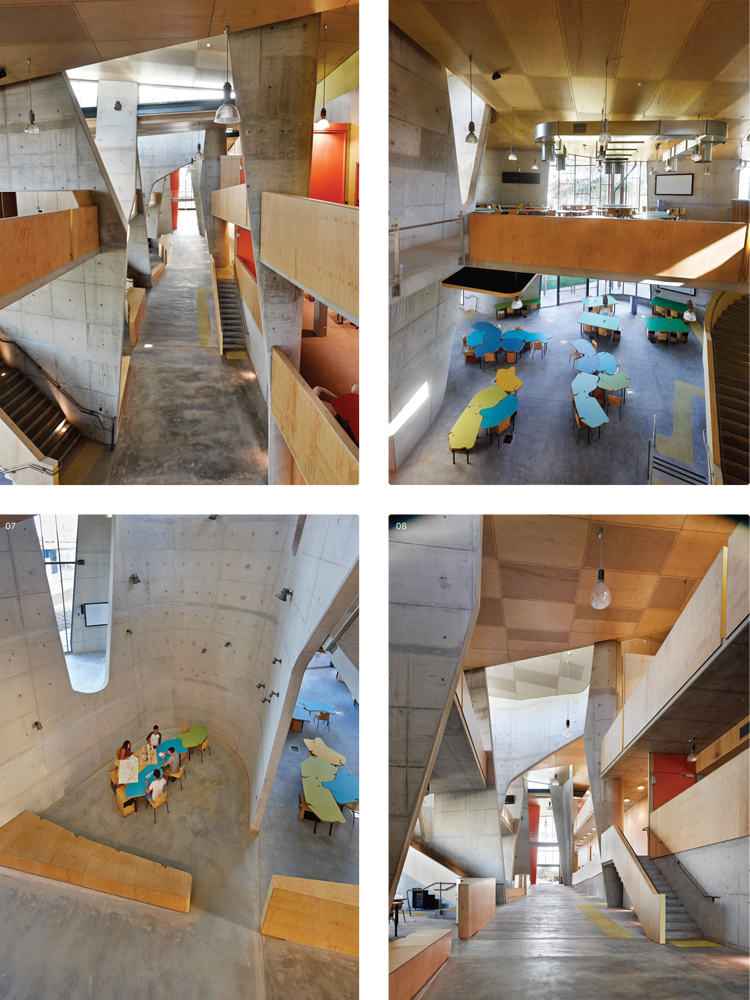
(clockwise from left) Axial thoroughfare bisects the teaching and administrative spaces; Eastern aspect breakout spaces; One of the ‘scoops’ used as workspace and pin-up area; The axial route is visually distorted by the sweeping curvilinear geometry of the ‘scoops’.
The Soheil Abedian School of Architecture is characterised by an acceptance of beauty that is impermanent, incomplete or imperfect, be that by design or manufacture. Cook has also, for over half a century, advocated an architecture that embraces modernity without the functionalist dogma of Modernism or the elitism of high culture. It is not implausible that dysfunction might give rise to a more engaged relationship to the building as creative alternatives are sought for pin-up.
There is one further puzzle, though it must be directed at the university as much as the architects. When the School of Architecture was established Bond University claimed that the program would have a dedicated focus on sustainable architecture, yet the new building is fully air-conditioned and seems to have been commissioned with an entirely contradictory set of objectives to its neighbouring building, the School of Sustainable Development. The juxtaposition of these two buildings, each aspiring to be living laboratories for students, sends a confused message about the faculty’s commitments.
CRAB’s building on the Gold Coast is unlikely to become, like Salk, the destination of international architectural pilgrims, despite the notoriety and eminence of Sir Peter Cook, but very few buildings do. In an institutional and urban context, where architecture of this quality is unusual it will, more modestly, provoke in students a desire to engage in architectural discourse and, just as importantly, with each other. Its fragment of a pedestrian street is a synecdoche for a cultured vision of urbanity where there is none – it is, in effect, a spot of beauty that serves to emphasise the horribleness of its surroundings – and this is a lot to achieve outside the metropolis.
You Might also Like
